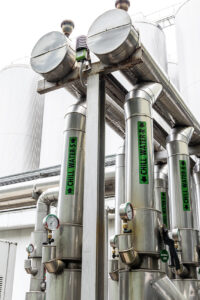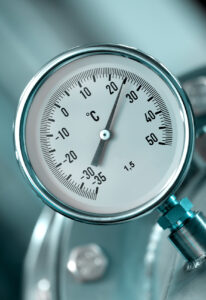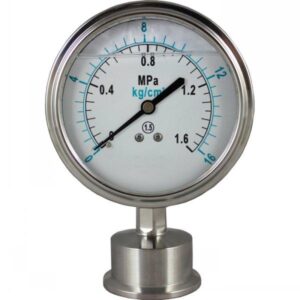Pressure gauges are essential instruments for monitoring and controlling pressure in a wide range of industrial applications. Among various design styles, the clamp type and bezel crimped type are two common structural options. Understanding the differences between these two styles can help users select the best gauge for their specific needs.
1. Clamp Type Pressure Gauge
The clamp type structure features a stainless steel clamp ring that securely fastens the front bezel and the back case together. This design offers several advantages:
- Ease of Maintenance: The gauge can be easily disassembled for internal inspection, cleaning, or recalibration.
- Enhanced Sealing: Often used in sanitary or food-grade applications where the gauge needs to be regularly cleaned.
- Aesthetic and Durable: The polished clamp ring provides a sleek appearance and strong structural integrity.
Clamp-type gauges are widely used in industries such as pharmaceutical, food and beverage, and chemical processing, especially where hygienic standards are critical.
2. Bezel Crimped Type Pressure Gauge
The bezel crimped type structure involves mechanically crimping the metal bezel to attach it firmly to the case. This is a more traditional design with the following features:
- Cost-Effective: Typically more economical due to simpler assembly and fewer components.
- Secure and Compact: The crimped design ensures a tight seal and a compact appearance.
- Limited Access: Once crimped, the gauge cannot be easily opened without specialized tools, making maintenance more difficult.
This type of gauge is commonly used in HVAC, automotive, general machinery, and industrial equipment where frequent disassembly is not required.
Choosing Between the Two
- Choose clamp type gauges when hygiene, ease of cleaning, or frequent maintenance is necessary.
- Choose bezel crimped type gauges for cost-sensitive applications or where internal access is not needed.
Both types offer reliable pressure measurement, and the right choice depends on your specific industry requirements and usage conditions.



